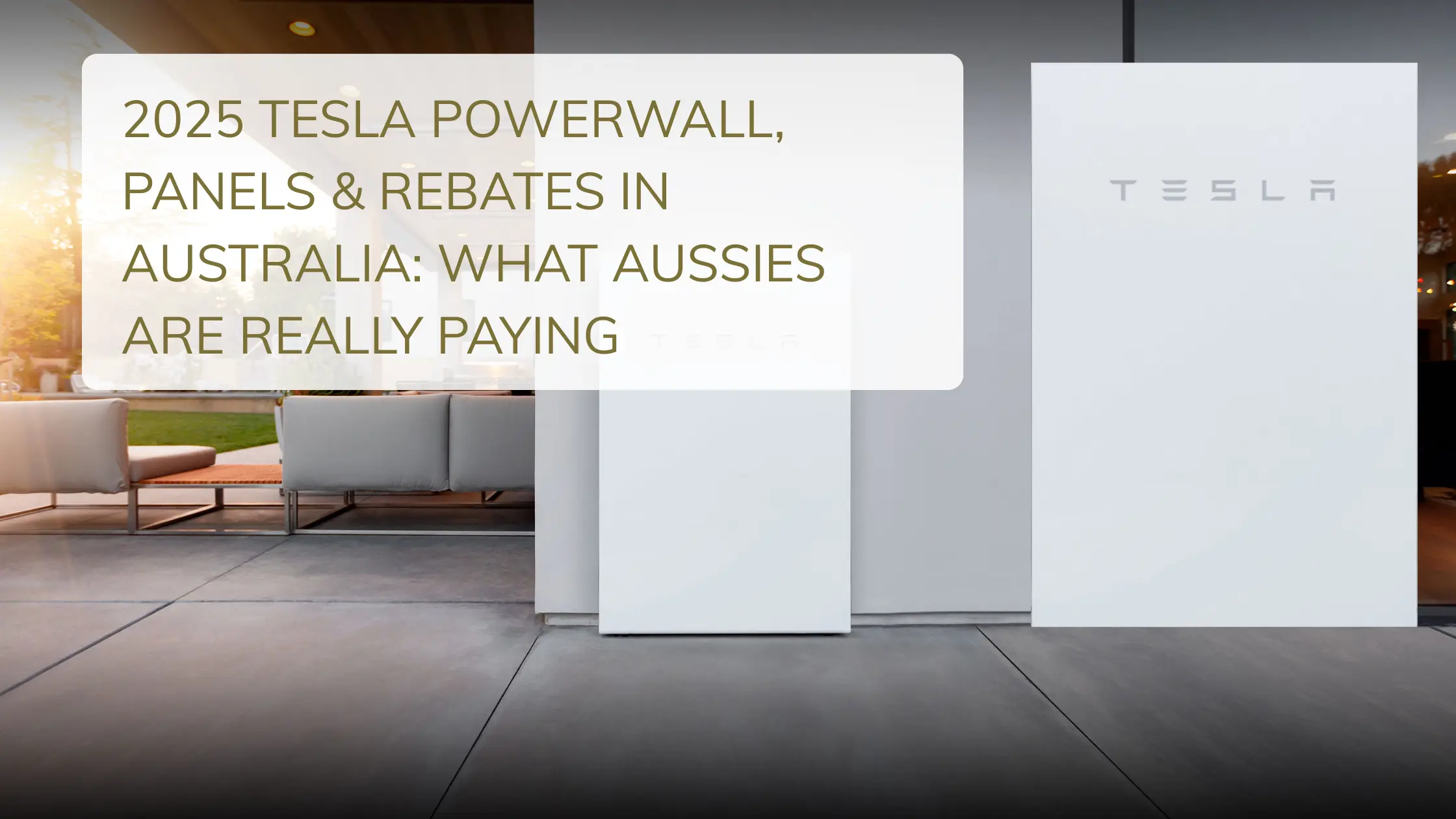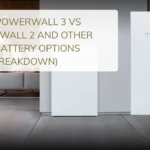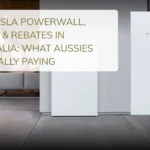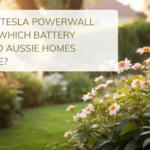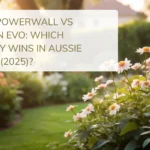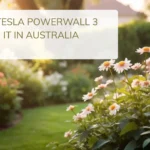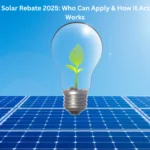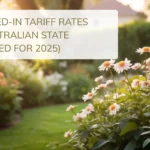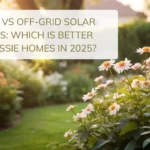2025 Tesla Powerwall, Panels & Rebates in Australia: What Aussies Are Really Paying
Let me tell you something my cousin Mark in Parramatta learnt the hard way — solar panels alone won’t save you from that dreaded evening electricity spike. He installed panels back in 2019, skipped the battery to “save money”, and now regrets every 6pm bill shock. Enter the Tesla Powerwall 3 — and a new way Aussies are tackling rising energy bills.
This guide brings together real-world data, actual quotes, and comparisons from the most Googled terms right now: Tesla Powerwall, inverters, rebates, panel pricing and the highest solar feed-in tariffs in NSW. If you’re thinking about investing in solar + battery in 2025 — this is your all-in-one resource.
1. Tesla Powerwall 3: What’s Changed in 2025?
In 2025, the Powerwall 3 is better, faster and sleeker than ever — and now includes a built-in inverter. That alone removes a few thousand dollars off your final system cost.
- Usable capacity: 13.5 kWh
- Output: 5 kW continuous, 10 kW peak
- Integrated inverter: Yes
- Warranty: 10 years, 70% capacity
My neighbour in Surry Hills switched from a hybrid system to Powerwall last month. During a surprise blackout in April, the only house lit on the street was his. He even ran a small espresso machine — and became a local hero that morning.
2. Tesla Inverters: Still Needed?
Nope. The new Powerwall 3 includes a powerful built-in inverter. That simplifies your setup and installation. If you’re replacing an old inverter, you save $1,500–$2,000 instantly.
Fun Fact: Inverter failures are one of the top 3 reasons solar systems go offline. So bundling it into Tesla’s system boosts reliability.
3. Tesla Solar Panels: Do Aussies Actually Buy Them?
Short answer: not always. While Tesla panels are durable and sleek, many Aussies go with third-party panels (like REC, Longi or Jinko) because they’re cheaper and readily available.
Real example: Joe in Newcastle got quoted $3.20/watt for Tesla-branded panels and $2.10/watt for REC Alpha Pure. Same warranty. Guess which he picked?
That said, Tesla’s panels integrate seamlessly with Powerwall and the app — so if looks and brand loyalty matter to you, they’re still a strong option.
4. teslapowerwall vs “tesla powerwall” vs “tesla” “powerwall” — What Do People Actually Search?
Keyword trends show that Aussies are searching all combinations. Whether it’s “tesla” “powerwall”, “tesla powerwall” or teslapowerwall, the interest is growing — fast. These searchers aren’t just curious — they’re ready to invest, especially in states like NSW, VIC, and SA where rebates still exist.
5. Price Breakdown: Tesla Powerwall Price in Sydney (2025)
The biggest question: what does it actually cost? Here’s what installers quoted (as of July 2025):
| System | Installed Price (AUD) | Rebate Eligible? |
|---|---|---|
| Tesla Powerwall 3 (solo) | $15,800 – $17,000 | Yes |
| 6.6kW Panels + Powerwall | $20,500 – $22,000 | Yes |
| 10kW Panels + Powerwall | $24,000 – $26,500 | Yes |
Pro Tip: Costs are typically $1,000–$2,000 less in Perth or Adelaide due to easier install rules and lower permit fees.
6. NSW Government Solar Panel Rebates (2025)
If you’re in NSW, you might still qualify for:
- Up to $3,000 in combined STCs and low-income household rebates
- Zero-interest loans through Empowering Homes (if income & postcode eligible)
- Battery rebate pilot program for VPP users (limited regions)
Example: A family in Campbelltown installed a 10kW system with Powerwall and got back over $4,200 in combined STCs and state incentives.
7. Aussie Home Loans and Solar Batteries
Here’s a neat trick — roll your battery into your mortgage. Many Aussie lenders like CBA, NAB, and Bank Australia offer “green home loans” or cashback incentives if you install a Powerwall or similar.
This means lower interest rates (sometimes under 4%) and no upfront strain on your wallet. My friend in Penrith financed their whole solar + battery install for under $90/month — and that’s covered by their savings.
8. Best Solar Feed-in Tariff Rates in NSW (2025)
Feed-in tariffs (FiTs) aren’t what they used to be — but they’re still worth understanding. As of 2025, here’s a snapshot of the highest FiTs offered by energy retailers in New South Wales:
| Retailer | Feed-in Tariff (FiT) | Conditions |
|---|---|---|
| Origin Energy | 7c – 12c/kWh | Higher FiT plans have higher usage rates |
| AGL | 6c – 10c/kWh | Only for systems up to 10kW |
| Red Energy | 8c/kWh | No peak rates, simple pricing |
| Amber Electric | Wholesale-linked | Can spike up to $1.20/kWh |
Real anecdote: My uncle in Wollongong switched to Amber and saw a 75c/kWh spike during February’s heatwave. It’s not guaranteed, but it’s proof dynamic pricing can work if you’re home-savvy.
9. Tesla vs BYD vs Sonnen: Battery Comparison (2025)
If you’re not dead-set on Tesla, it’s worth checking out the contenders. Here’s a breakdown from real installs across Sydney, Melbourne, and Brisbane.
| Brand | Usable Storage | Price (Installed) | VPP Ready? | Mobile App Quality |
|---|---|---|---|---|
| Tesla Powerwall 3 | 13.5 kWh | $16,000–17,000 | Yes (Multiple VPPs) | Excellent |
| BYD HVM + Inverter | 10.2–22 kWh | $15,000–18,500 | Partial | Good |
| Sonnen Evo | 10 kWh | $14,500–16,000 | Limited | Average |
Takeaway: Tesla wins on app experience and VPP support. BYD wins on modularity and flexibility. Sonnen is great for off-grid reliability, but lacks VPPs.
10. Cost vs Value: Real Aussie ROI Breakdown
Let’s say you install a 10kW solar system + Tesla Powerwall 3 in 2025. What’s the return?
- Upfront cost (after rebates): ~$23,000
- Annual bill savings (NSW avg): ~$2,100
- VPP earnings: $300–600/year
- Payback time: ~8–9 years
- 10-year total savings: ~$24,000–28,000
11. Should You Join a VPP with Your Powerwall?
Yes — if you want maximum bang for buck. Virtual Power Plants let your home battery export power to the grid during peak demand. Here’s what they offer:
- Energy Locals: Flat credit system, up to $400/year
- Amber Electric: Dynamic export pricing — big spikes possible
- Discover Energy: AI-optimised battery discharge
Example: Lisa in Ballina earned $540 in one year on Tesla Energy Plan — and used that to pay her EV charging costs. VPPs make your Powerwall work even harder for you.
12. Final Thoughts: What Makes Sense in 2025
Look, solar is still a great deal. But batteries — especially the Tesla Powerwall — are no longer a futuristic luxury. They’re smart, economical, and increasingly essential in a country like Australia where power prices are climbing and blackouts are rising.
Whether you go all-in with Tesla, or mix and match panels + BYD or Sonnen, the key is to install smart — with future-proof tech, VPP options, and low-interest financing if needed.
If you’ve got questions or want a custom breakdown for your state and roof size, flick me a message. I love helping Aussies go solar the smart way.
– From someone who used to hate their power bill… and now checks their Tesla app like it’s Netflix.
